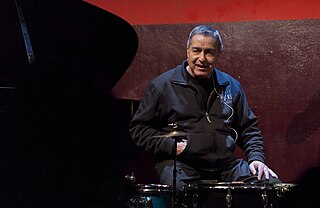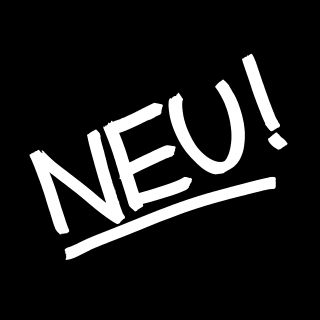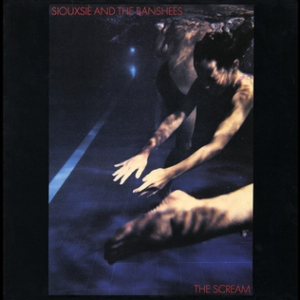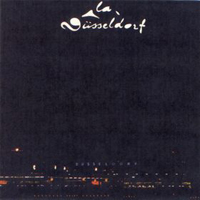
Kraftwerk is a German electronic band formed in Düsseldorf in 1970 by Ralf Hütter and Florian Schneider. Widely considered innovators and pioneers of electronic music, Kraftwerk were among the first successful acts to popularize the genre. The group began as part of West Germany's experimental krautrock scene in the early 1970s before fully embracing electronic instrumentation, including synthesizers, drum machines, and vocoders. Wolfgang Flür joined the band in 1974 and Karl Bartos in 1975, expanding the band to a quartet.

Siouxsie and the Banshees were a British rock band formed in London in 1976 by vocalist Siouxsie Sioux and bass guitarist Steven Severin. They have been widely influential, both over their contemporaries and with later acts. The Times called the group "one of the most audacious and uncompromising musical adventurers of the post-punk era".

Can were a German experimental rock band formed in Cologne in 1968 by Holger Czukay, Irmin Schmidt (keyboards), Michael Karoli (guitar), and Jaki Liebezeit (drums). The group used several vocalists, most prominently the American Malcolm Mooney (1968–70) and the Japanese Damo Suzuki (1970–73). They have been widely hailed as pioneers of the German krautrock scene.
Krautrock is a broad genre of experimental rock that developed in West Germany in the late 1960s and early 1970s. It originated among artists who blended elements of psychedelic rock, avant-garde composition, and electronic music, among other eclectic sources. Common elements included hypnotic rhythms, extended improvisation, musique concrète techniques, and early synthesizers, while the music generally moved away from the rhythm & blues roots and song structure found in traditional Anglo-American rock music. Prominent groups associated with the krautrock label included Neu!, Can, Faust, Tangerine Dream, Kraftwerk, Cluster, Ash Ra Tempel, Popol Vuh, Amon Düül II and Harmonia.

Kraftwerk is the debut studio album by German electronic band Kraftwerk. It was released in Germany in 1970, and produced by Konrad "Conny" Plank.

Stephen Paul David Morris is an English drummer who is best known for his work with the rock band New Order and, previously, Joy Division. He also wrote and performed in The Other Two, a band consisting of Morris and his girlfriend and later wife, Gillian Gilbert. Morris also participated in the New Order spin-off band Bad Lieutenant.

Jaki Liebezeit was a German drummer, best known as a founding member of experimental rock band Can. He was called "one of the few drummers to convincingly meld the funky and the cerebral".

Neu! were a West German krautrock band formed in Düsseldorf in 1971 by Klaus Dinger and Michael Rother following their departure from Kraftwerk. The group's albums were produced by Conny Plank, who has been regarded as the group's "hidden member". They released three albums in their initial incarnation—Neu! (1972), Neu! 2 (1973), and Neu! 75 (1975)—before disbanding in 1975. They briefly reunited in the mid-1980s.

Neu! is the debut album by German krautrock band Neu!. It was released in 1972 by Brain Records. It was the first album recorded by the duo of Michael Rother and Klaus Dinger after leaving Kraftwerk in 1971. They continued to work with producer Konrad "Conny" Plank, who had also worked on the Kraftwerk recording sessions.

Neu! 2 is the second studio album by the krautrock band Neu!. It was recorded in January 1973 and mixed in February 1973, both at Windrose-Dumont-Time Studios in Hamburg, West Germany, and released in 1973 by Brain Records. It was officially reissued by Astralwerks in the US and by Grönland in the UK and Europe on 29 May 2001. Illegal bootleg CDs from the Germanofon label were widely available in the late 1990s.

Neu! 75 is the third studio album by the krautrock band Neu!. It was recorded and mixed at Conny Plank's studio between December 1974 and January 1975. It was released in 1975 by Brain Records, and officially reissued on CD on 29 May 2001 by Astralwerks in the US and by Grönland Records in the UK.

Michael Rother is a German experimental musician, best known for being a founding member of the influential bands Neu! and Harmonia, and an early member of the band Kraftwerk.

The Scream is the debut studio album by British rock band Siouxsie and the Banshees, released on 13 November 1978 by Polydor Records. The album is considered a landmark recording: its innovative combination of angular guitar with a bass-led rhythm and machine-like drums played mostly on toms, made it a pioneering work of the post-punk genre.

Klaus Dinger was a German musician and songwriter most famous for his contributions to the seminal krautrock band Neu!. He was also the guitarist and chief songwriter of new wave group La Düsseldorf and briefly the percussionist of Kraftwerk.
La Düsseldorf was a German band, consisting of onetime Kraftwerk drummer and Neu! multi-instrumentalist Klaus Dinger and occasional Neu! collaborators Thomas Dinger and Hans Lampe. La Düsseldorf was formed after Neu! disbanded following the release of their Neu! '75 record. They released a string of successful albums during the late 1970s and early 1980s, and were considered highly influential by Brian Eno and David Bowie, with Bowie going so far as calling La Düsseldorf "the soundtrack of the eighties".

La Düsseldorf is the first album of the band La Düsseldorf.

John McKay is an English songwriter and guitarist. He was the first studio guitarist of Siouxsie and the Banshees. He was a member of the group from July 1977 until September 1979. He played a "jagged unorthodox chording", and created a "metal-shard roar" with his guitar. Q magazine included McKay's work on "Hong Kong Garden" in its list of the "100 Greatest Guitar Tracks Ever". He recorded two studio albums with the band, their debut album The Scream in 1978 and Join Hands in 1979.

Kenneth Ian Morris, known professionally as Kenny Morris, is an English drummer, songwriter and visual artist. He was the first studio drummer of Siouxsie and the Banshees. He joined the band in January 1977; he had attended their first live appearance at the 100 Club a few months earlier and had been impressed by their performance. Morris's first studio recording with the group was in November 1977 when they recorded their first John Peel session for BBC radio. Music journalist Kris Needs said : "Like as a rhythm machine for feet and guts Kenny Morris' drumming is unorthodox, primitive and far removed from the clicking hi-hats of the fly-strength paradiddle merchants".

Year of the Tiger is the sixth album released by German band La! Neu?. Like its sister-album Goldregen it was recorded and released relatively quickly in 1997-8. Unlike Goldregen – which featured only acoustic instruments – Year of the Tiger is predominantly electronic and beat-driven. The entire album is performed live on the CD Live at Kunsthalle Düsseldorf.

Eat Lights Become Lights is a British alternative rock band. They are known for their live performances as the house band at Klub Motorik. The band take inspiration from the likes of Kraftwerk, who were major influences on what would become known as post-punk music. Krautrock has progressively developed internationally, and each region interprets the musical structure differently. Eat Lights Become Lights have repackaged krautrock for a new audience without compromising on the long standing musical codes and conventions.



















